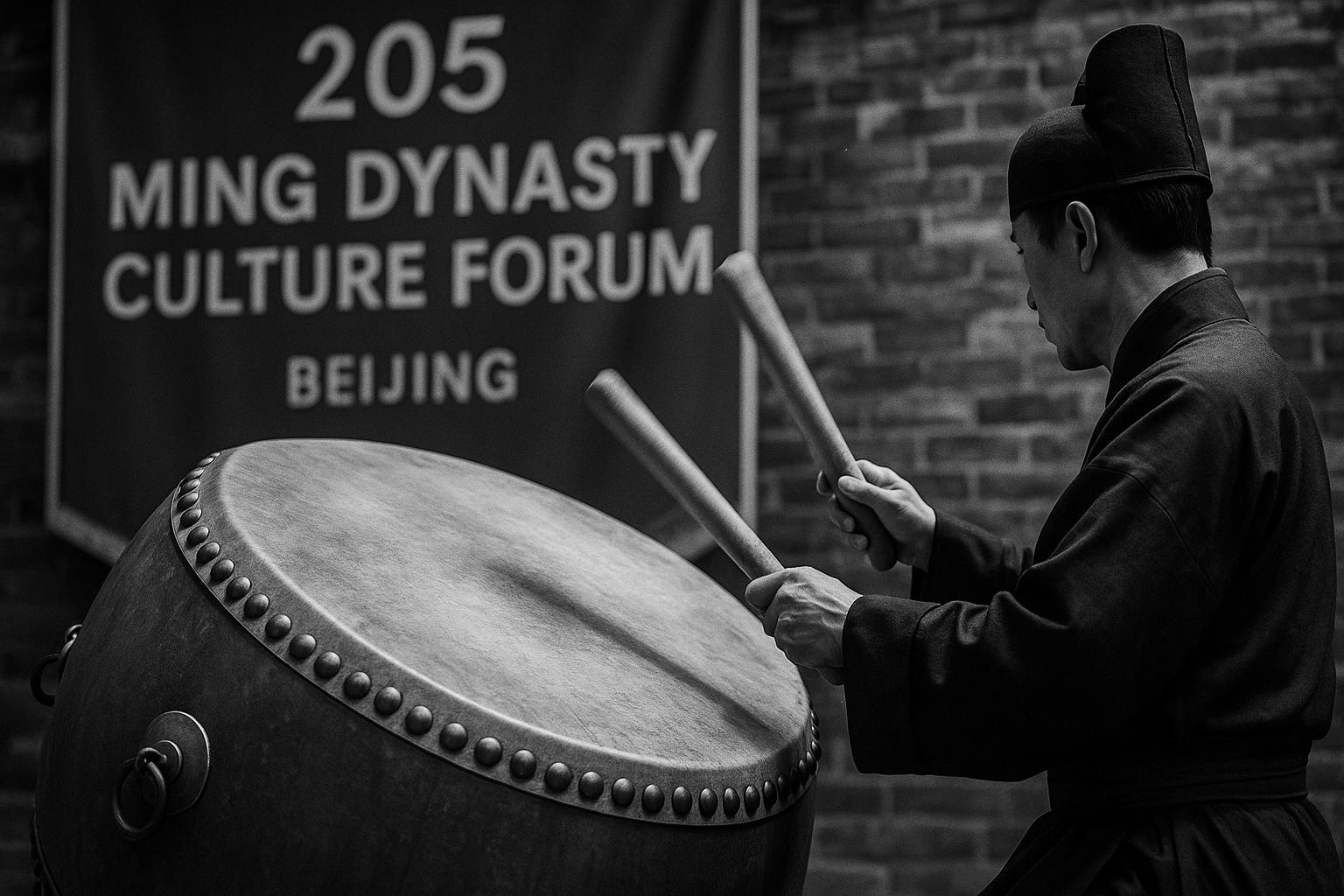In a notable endeavour to deepen the appreciation and understanding of Ming Dynasty culture, the "Impressions of the Ming Dynasty: A World Heritage Chapter" Ming Dynasty Culture Forum 2025 commenced in Beijing on June 14. This significant event, a collaborative project between the Changping District People’s Government and key cultural agencies, is part of ongoing efforts to protect and innovate heritage practices—underscored by General Secretary Xi Jinping’s call for the safeguarding of China's cultural treasures.
The forum's opening ceremony set a striking historical atmosphere, featuring the traditional sounds of the "Threefold Drum." Various distinguished scholars gathered to discuss the event's theme around cultural inheritance and innovation. Among the speakers was Gao Shouxian, President of the Chinese Ming History Society, who emphasised the Ming Dynasty's impact on civilisational exchanges. He was joined by Shan Jixiang, Director of the Palace Museum, who introduced forward-thinking projects like the Changping Dingling VR Experience Center, which seeks to make Ming heritage more accessible through technology. Furthermore, experts in traditional medicine, such as Li Diangui, explored the legacy of Ming medical practices, demonstrating unique ways to incorporate historical insights into contemporary frameworks.
The forum also marked a historic union of the management institutions of the Ming tombs, uniting five significant sites: the Ming Thirteen Tombs in Changping, the Mingzhu Tomb in Jiangsu, the Minghuang Tomb in Anhui, the Mingxiao Tomb in Nanjing, and the Mingxian Tomb in Hubei. During discussions, representatives detailed their individual heritage revitalisation efforts and outlined cooperative visions for future cultural initiatives. A notable commitment was made to utilise digital technology in cultural display, symbolically represented by the illumination of a "Ming Dynasty Culture Totem."
New developments were also unveiled regarding the broader cultural landscape. A proposal for the Ming Dynasty Culture Cultural and Tourism Complex received enthusiastic contributions from global participants, aiming to enhance the local cultural and tourism synergy. Winning design submissions included ambitious projects like "Ming Fashion Multitude," which envisions a stunning theatre facility combined with rich Ming cultural elements. These proposed projects promise to elevate the status of the area as a premier cultural destination in northern Beijing, fostering a robust tourism economy intertwined with heritage.
Parallel sub-forums further enriched the discourse, covering multiple angles of the Ming Dynasty's legacy. Topics ranged from historical achievements and contemporary insights surrounding figures like Zheng He, to discussions about the evolution of traditional Chinese medicine through the "Compendium of Materia Medica." Innovative technological discussions centred on the application of AI in heritage protection and consumer engagement, suggesting practical pathways for integrating culture and tourism.
A highlight of the event was the exhibition titled "Impressions of the Ming Dynasty," featuring over one hundred rare relics, including the stunning Golden Winged Crown, emblematic of imperial authority, alongside other treasured items like Emperor Wanli's ceremonial goblet. This exhibition not only captured the grandeur of Ming Dynasty aesthetics but also served as an immersive experience for attendees, employing VR technologies to engage visitors in the historical narrative of the era.
Since its inception in 2022, the Ming Dynasty Culture Forum has significantly broadened its influence, fostering partnerships and scholarly exchanges that support the ongoing preservation and celebration of Ming heritage. The Changping District has set ambitious goals for the revitalisation of cultural heritage, intending to open the Ming Tombs fully by 2030, enhancing accessibility while ensuring that the historical narrative continues to resonate in contemporary society.
The Ming Dynasty Culture Forum 2025 stands as a testament to China's commitment to linking heritage with modernisation, seeking to weave the past into a comprehensive vision for the future of cultural tourism and education. Through these concerted efforts, Changping aims not only to enhance local cultural prominence but also to contribute meaningfully to Beijing's status as a national cultural centre.
📌 Reference Map:
- Paragraph 1 – [1], [4]
- Paragraph 2 – [1], [2], [5]
- Paragraph 3 – [1], [3], [6]
- Paragraph 4 – [1], [2], [3]
- Paragraph 5 – [1], [6], [7]
- Paragraph 6 – [1], [6], [7]
- Paragraph 7 – [1], [2], [3]
- Paragraph 8 – [1], [4], [5]
Source: Noah Wire Services
